Abstract
A peer training program, in which experienced staff trained new staff, was evaluated as a method for teaching and maintaining safety-related caregiver skills in an institutional setting for the developmentally disabled. Three sets of safety-type skills were assessed in simulated emergency situations: responding to facility fires, managing aggressive attacks by residents, and assisting residents during convulsive seizures. Using a multiple-baseline research design, results indicated that the peer training program was an effective method of training the three types of emergency skills to new direct care staff. The program also appeared effective in improving the skills of the peer trainers. Perhaps most importantly, results indicated that if experienced staff functioned as peer trainers for particular emergency skills, then their proficiency in those skills maintained over time whereas their proficiency declined in emergency skills for which they did not act as peer trainers. Social validity information collected from available staff 23 months after the program was completed supported the utility of the training in terms of staff responses during actual emergencies. Also, acceptability measures indicated that staff liked participating in the program. However, some inconsistencies between staff verbal reports and performance-based measures of acceptability were noted. Results are discussed regarding the overall effectiveness of the peer training program, the importance of maintenance strategies for safety-related skills, and the need for multidimensional analyses of staff acceptability in staff training/management research.
Full text
PDF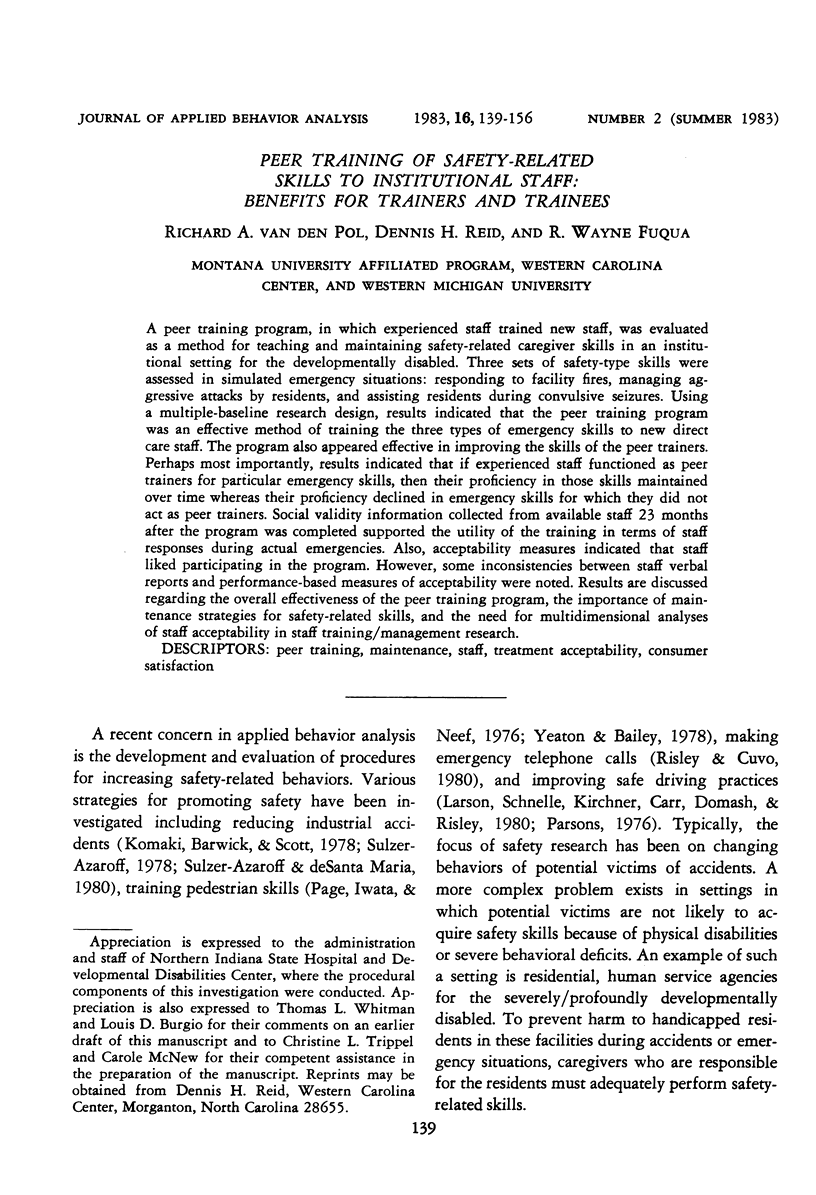
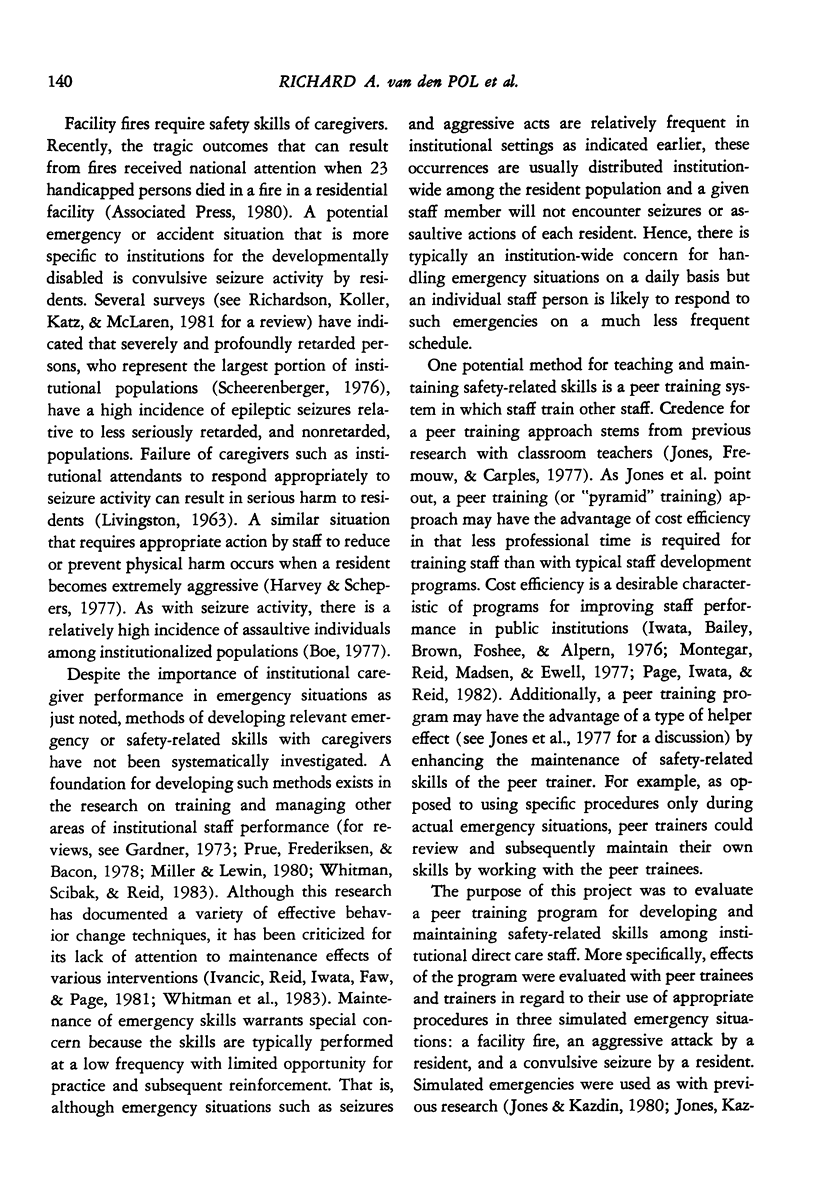
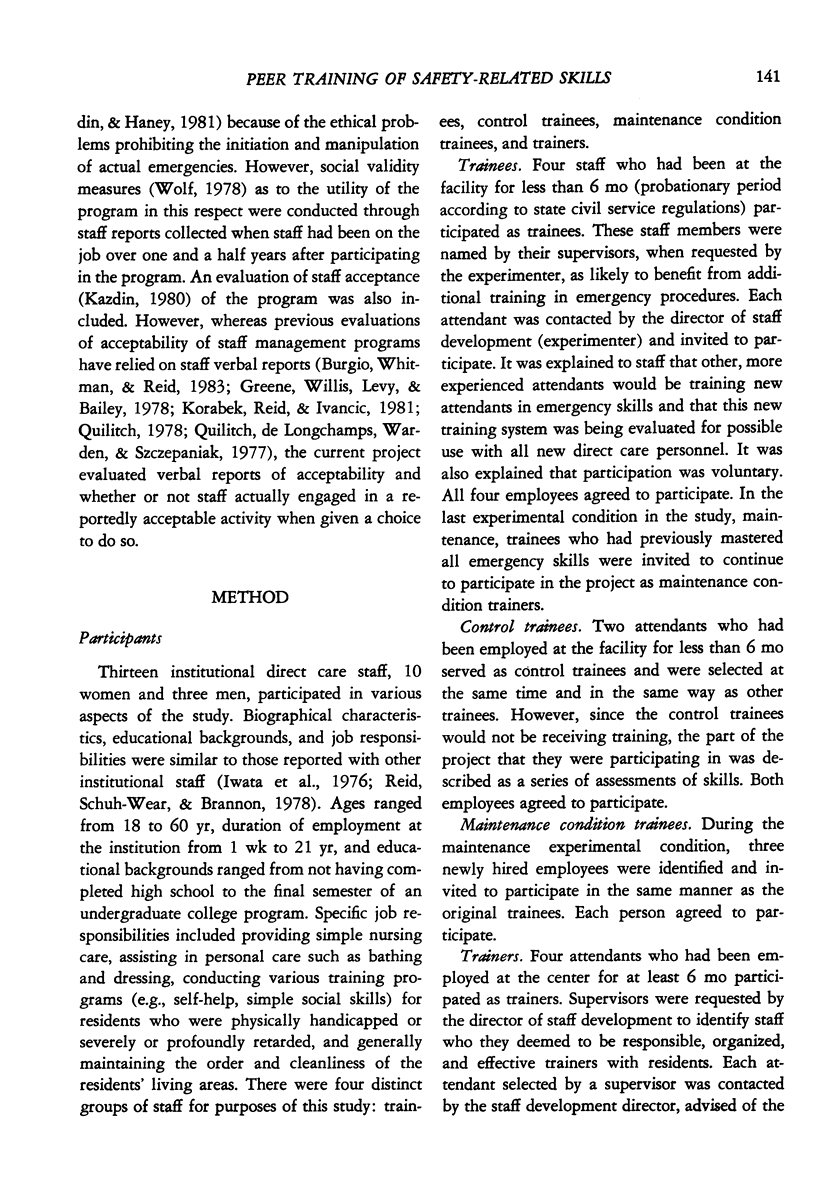
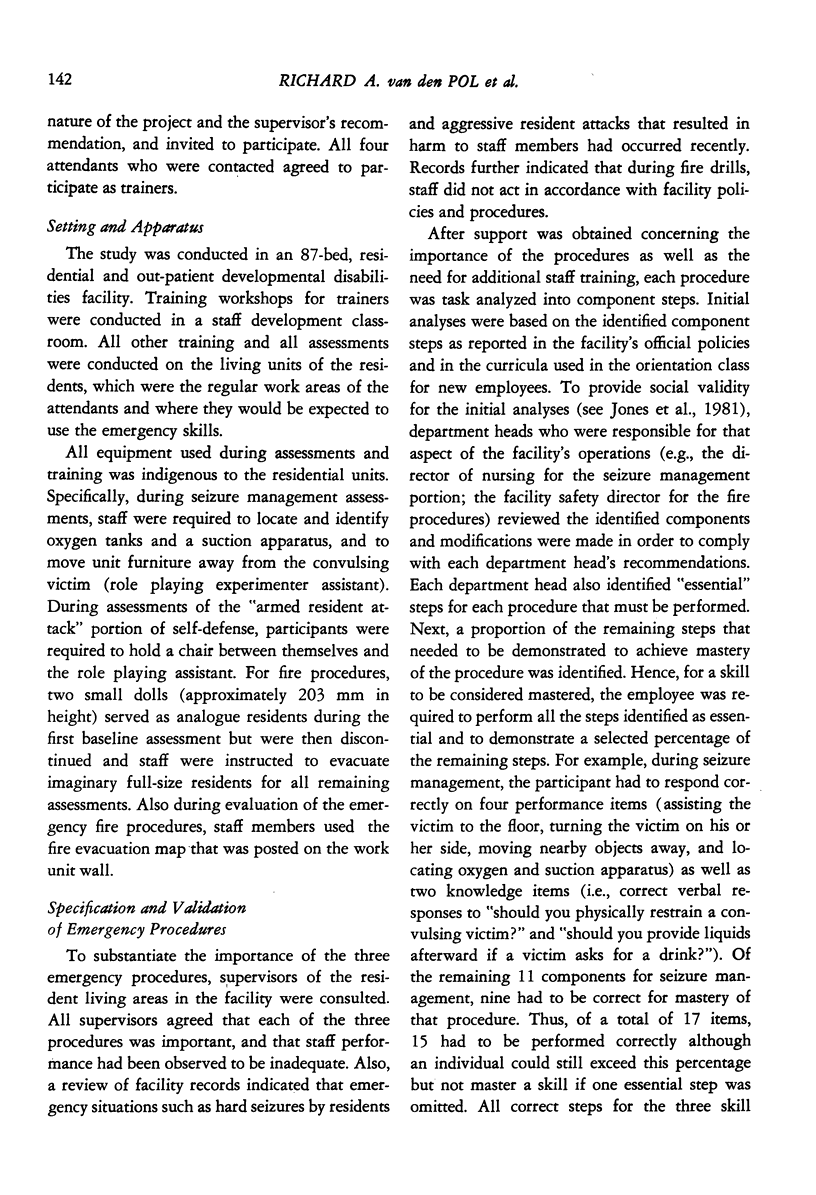
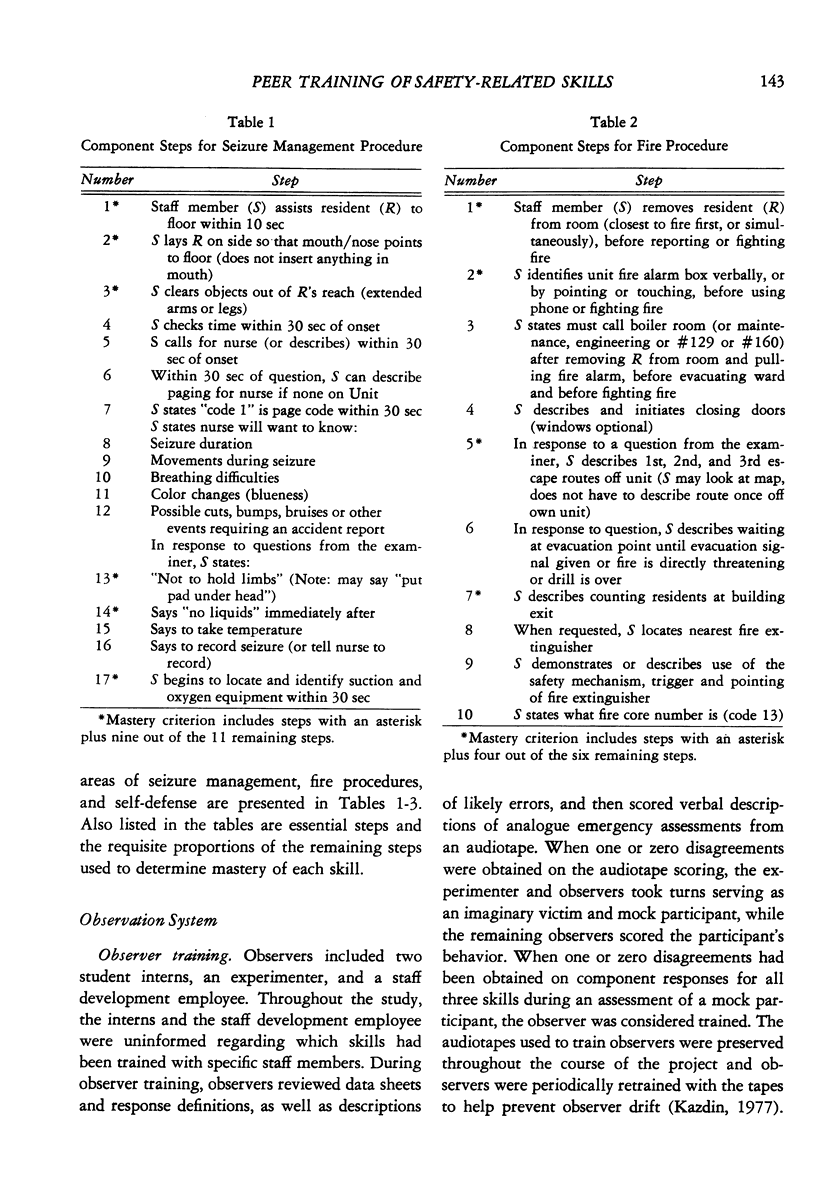
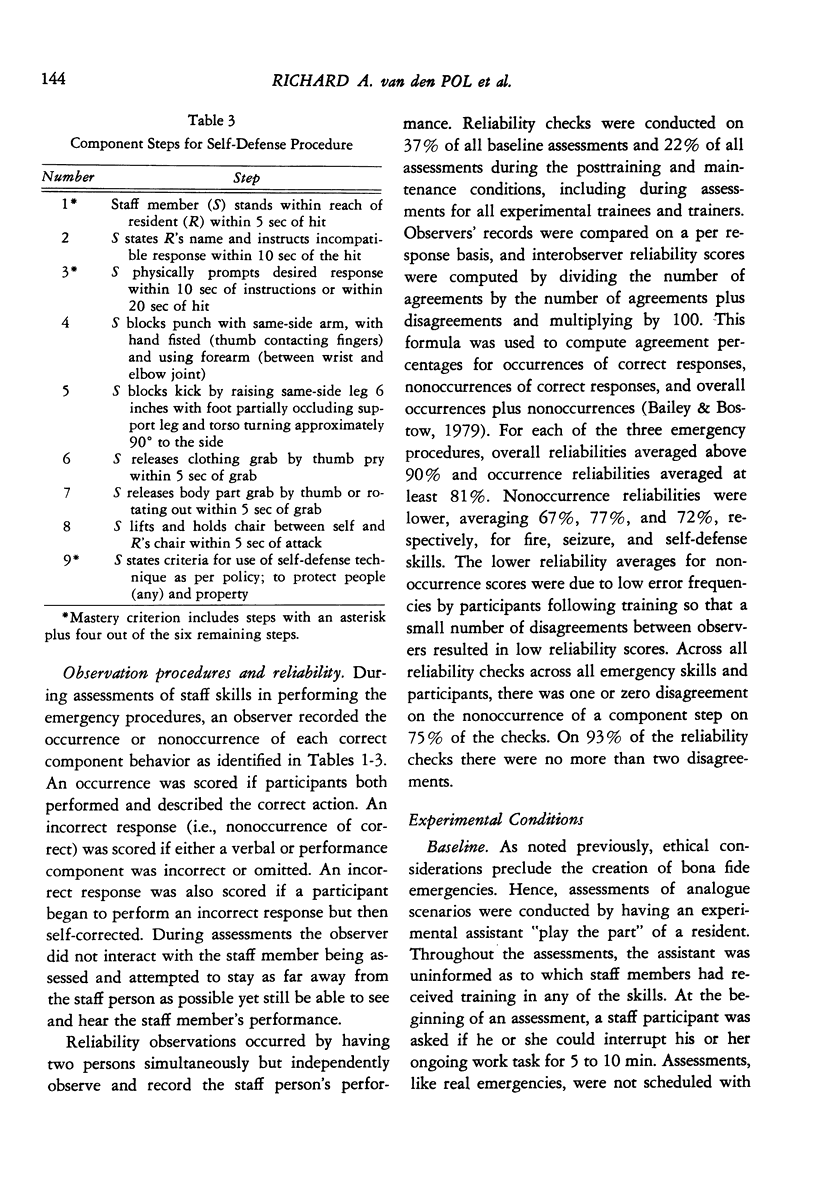

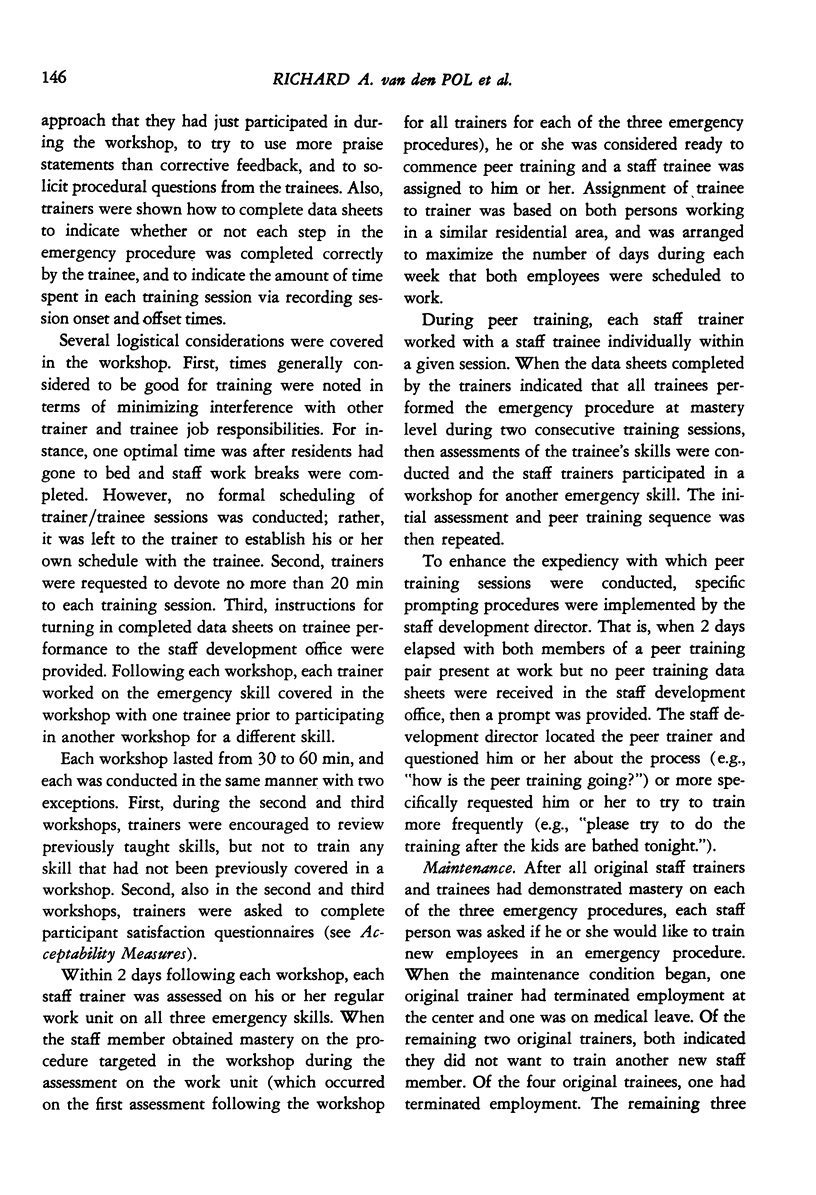
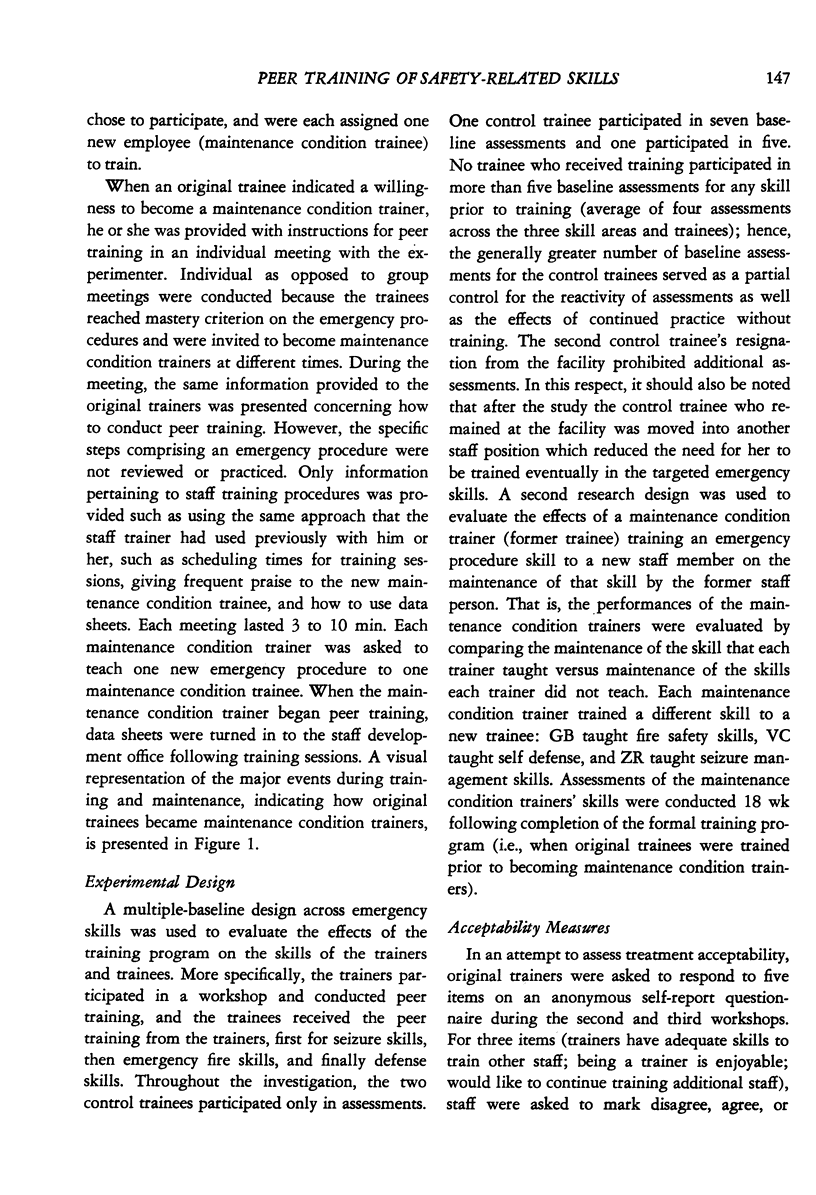
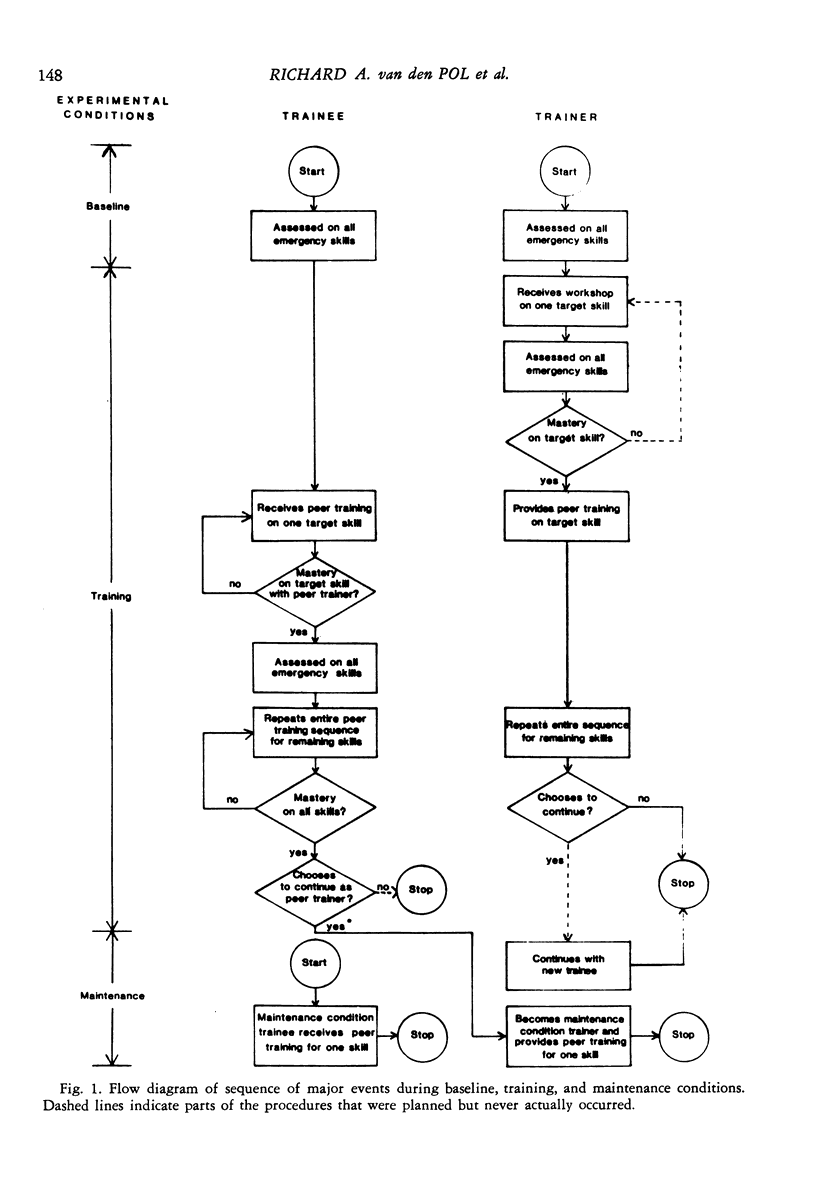
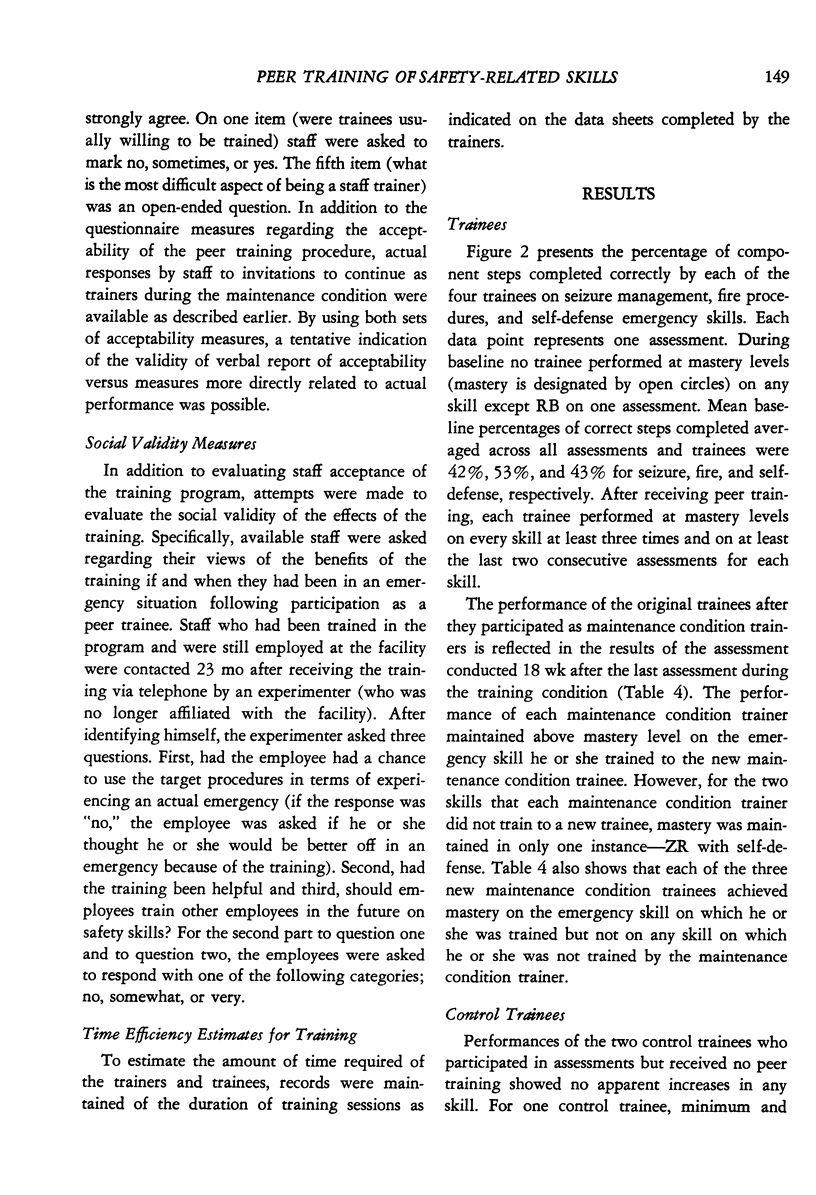

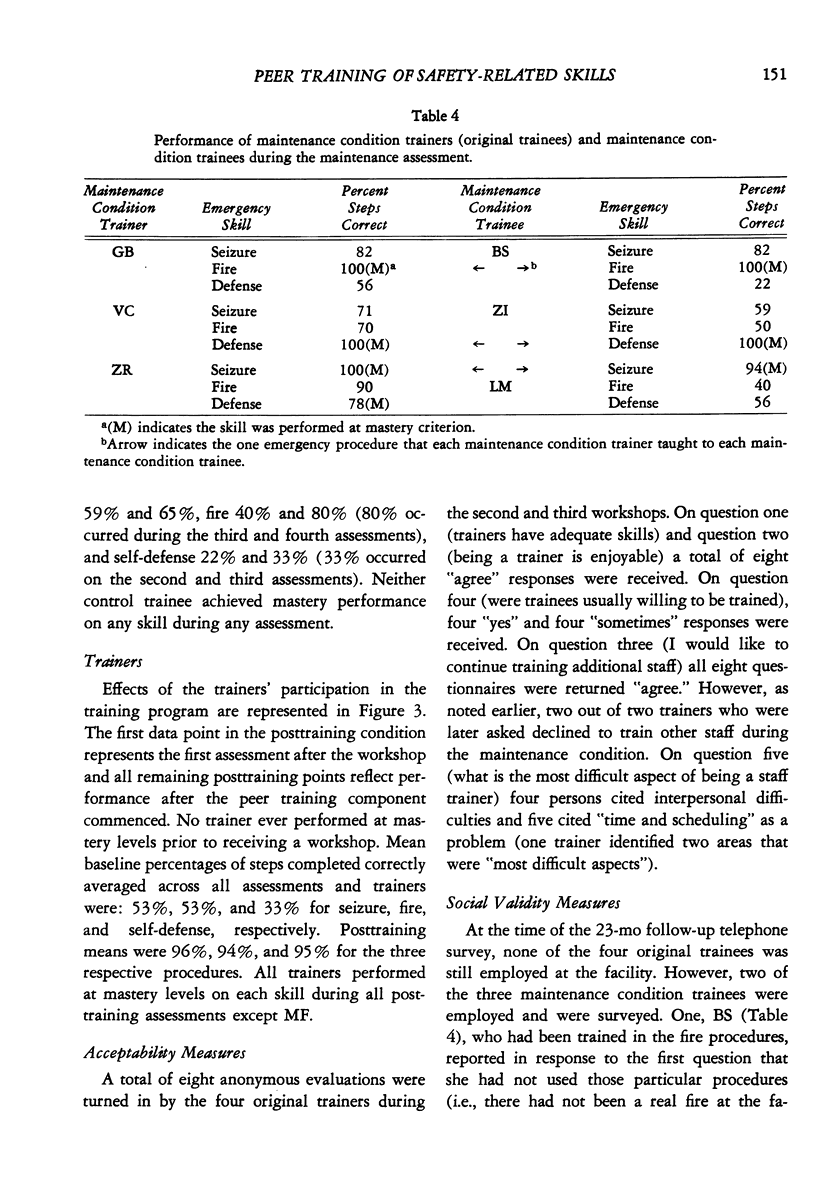
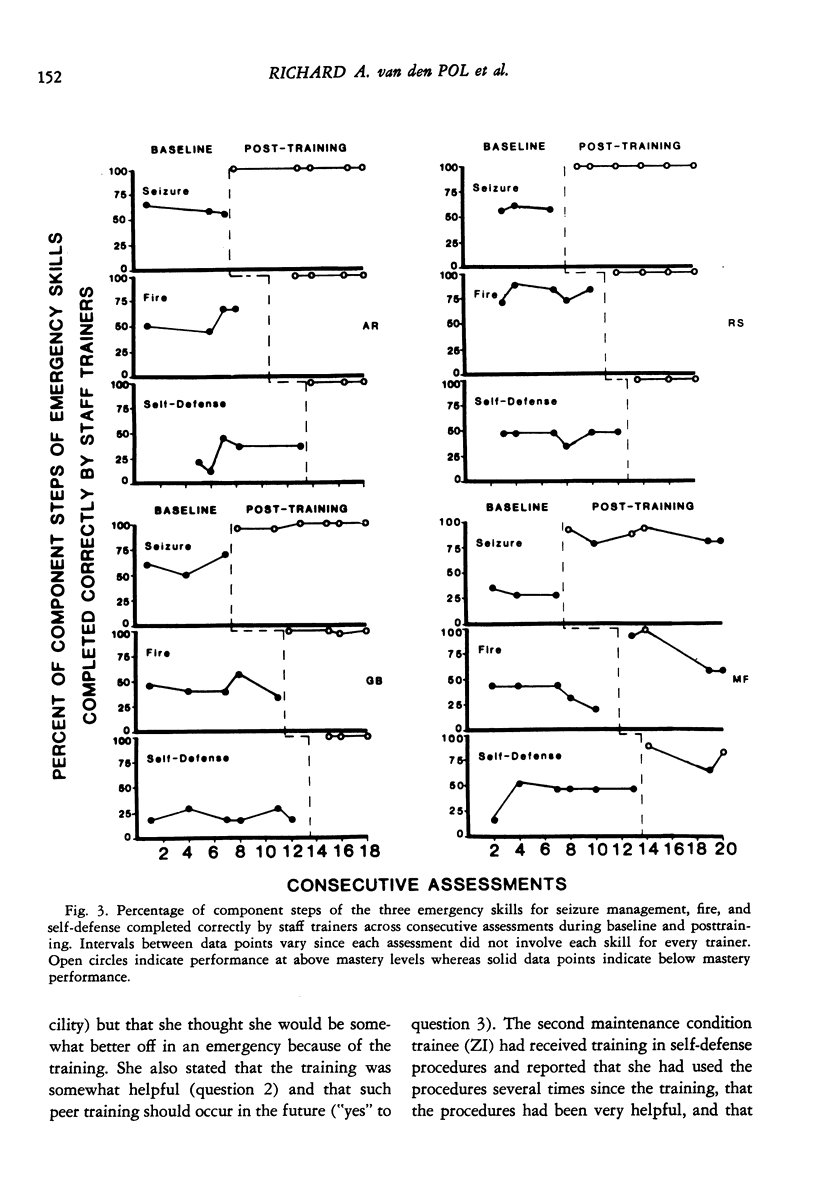
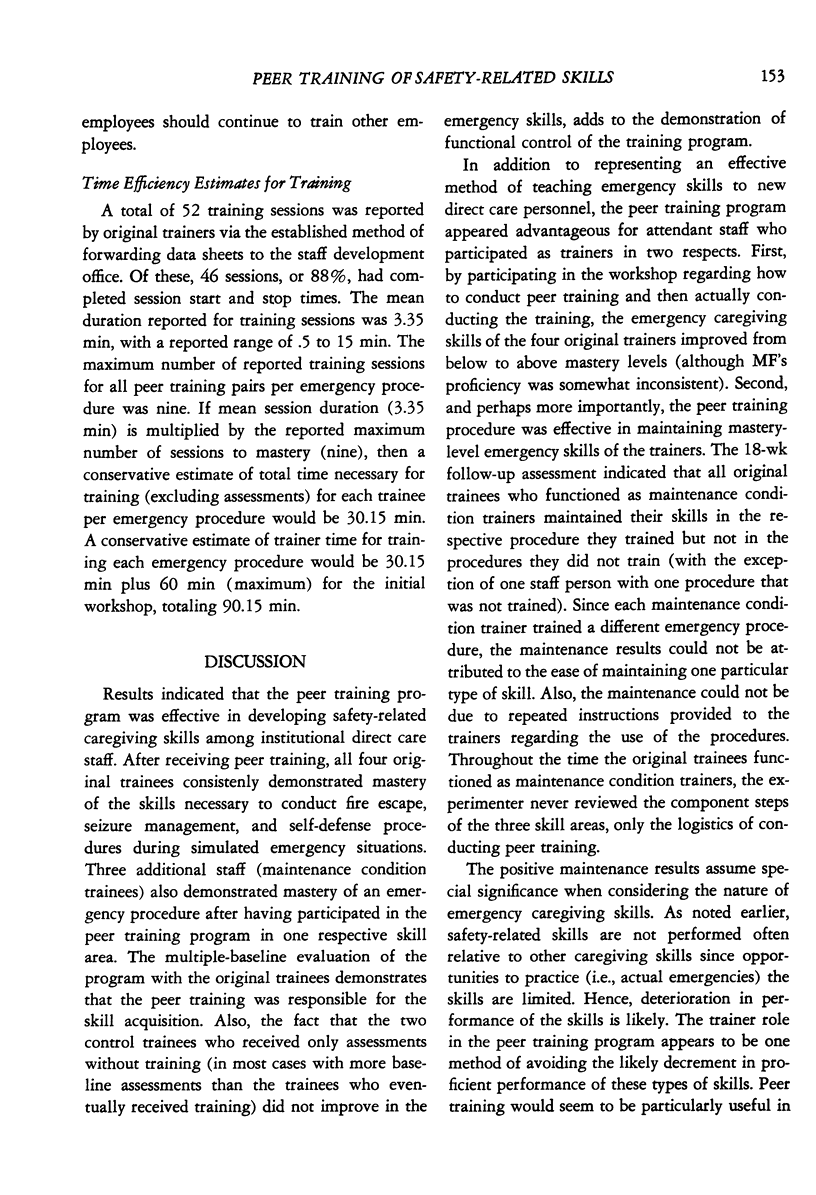
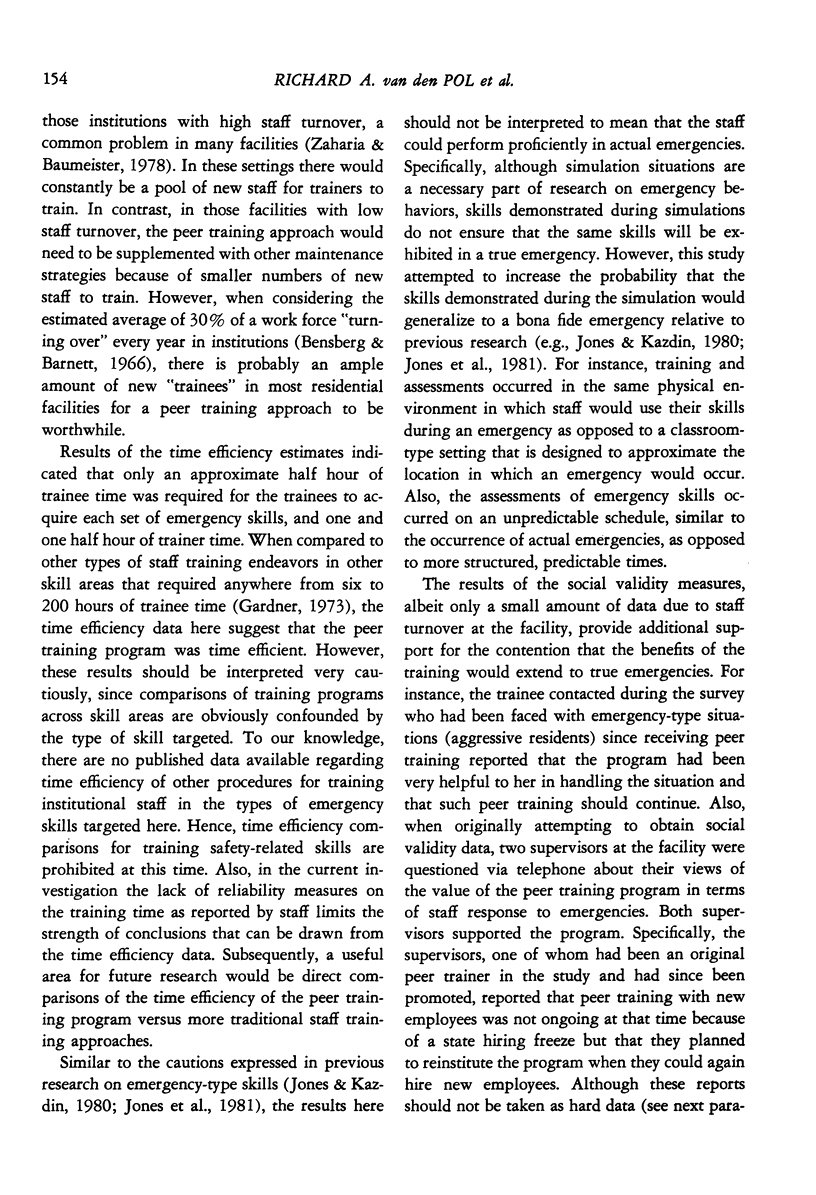
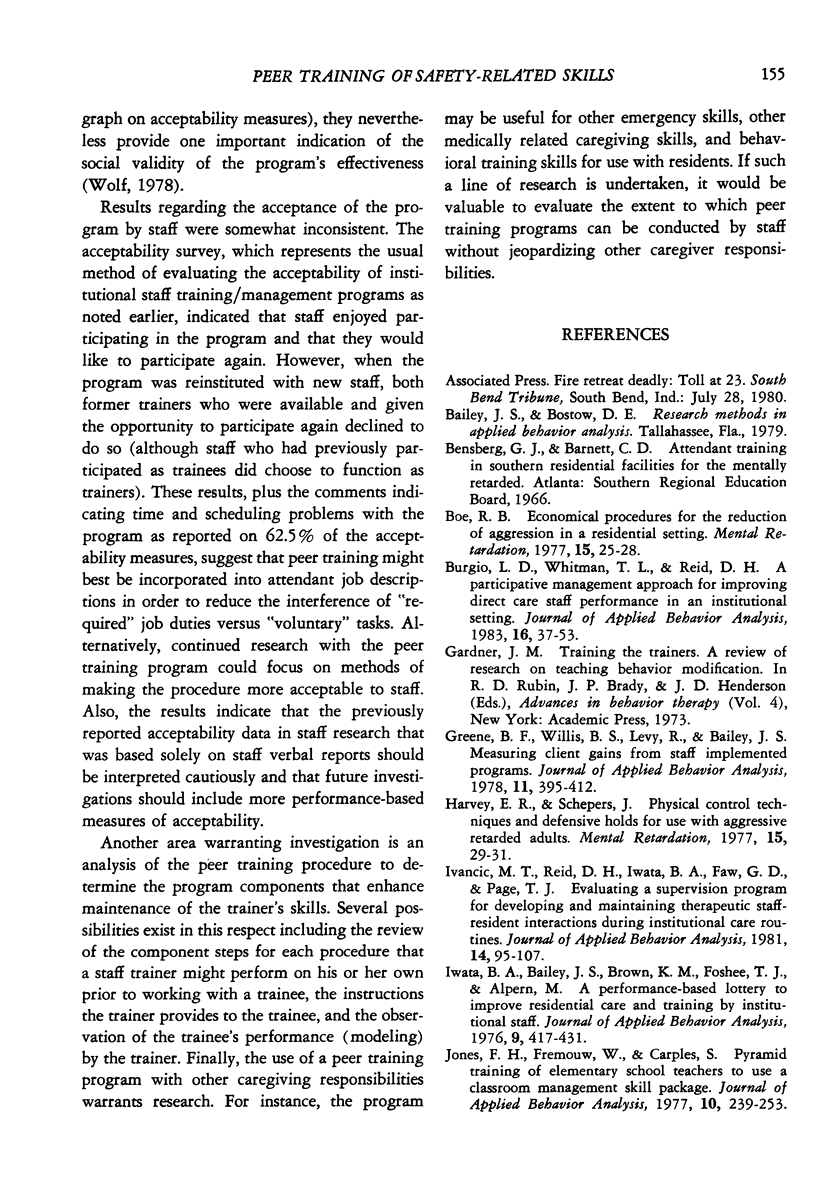
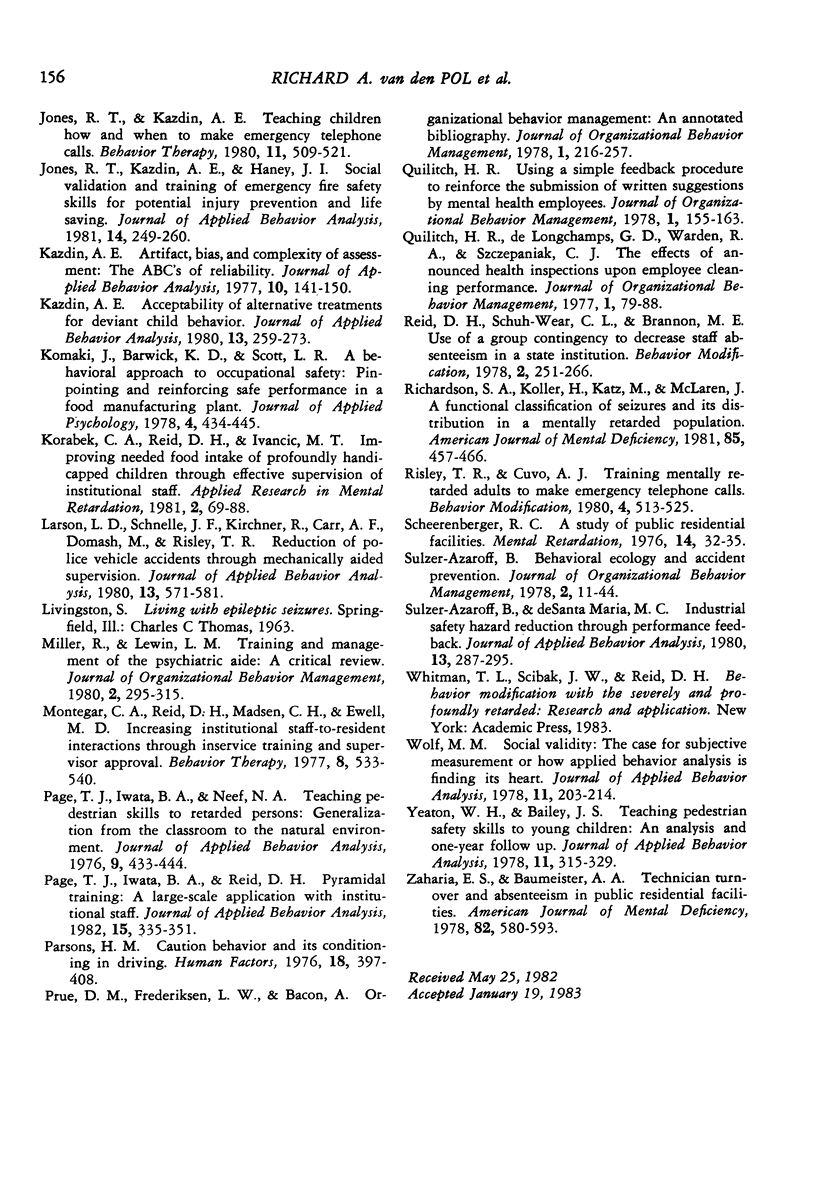
Selected References
These references are in PubMed. This may not be the complete list of references from this article.
- Burgio L. D., Whitman T. L., Reid D. H. A participative management approach for improving direct-care staff performance in an institutional setting. J Appl Behav Anal. 1983 Spring;16(1):37–53. doi: 10.1901/jaba.1983.16-37. [DOI] [PMC free article] [PubMed] [Google Scholar]
- Greene B. F., Willis B. S., Levy R., Bailey J. S. Measuring client gains from staff-implemented programs. J Appl Behav Anal. 1978 Fall;11(3):395–412. doi: 10.1901/jaba.1978.11-395. [DOI] [PMC free article] [PubMed] [Google Scholar]
- Harvey E. R., Schepers J. Physical control techniques and defensive holds for use with aggressive retarded adults. Ment Retard. 1977 Oct;15(5):29–31. [PubMed] [Google Scholar]
- Ivancic M. T., Reid D. H., Iwata B. A., Faw G. D., Page T. J. Evaluating a supervision program for developing and maintaining therapeutic staff-resident interactions during institutional care routines. J Appl Behav Anal. 1981 Spring;14(1):95–107. doi: 10.1901/jaba.1981.14-95. [DOI] [PMC free article] [PubMed] [Google Scholar]
- Iwata B. A., Bailey J. S., Brown K. M., Foshee T. J., Alpern M. A performance-based lottery to improve residential care and training by institutional staff. J Appl Behav Anal. 1976 WINTER;9(4):417–431. doi: 10.1901/jaba.1976.9-417. [DOI] [PMC free article] [PubMed] [Google Scholar]
- Jones F. H., Fremouw W., Carples S. Pyramid training of elementary school teachers to use a classroom management "skill package". J Appl Behav Anal. 1977 Summer;10(2):239–253. doi: 10.1901/jaba.1977.10-239. [DOI] [PMC free article] [PubMed] [Google Scholar]
- Jones R. T., Kazdin A. E., Haney J. I. Social validation and training of emergency fire safety skills for potential injury prevention and life saving. J Appl Behav Anal. 1981 Fall;14(3):249–260. doi: 10.1901/jaba.1981.14-249. [DOI] [PMC free article] [PubMed] [Google Scholar]
- Kazdin A. E. Acceptability of alternative treatments for deviant child behavior. J Appl Behav Anal. 1980 Summer;13(2):259–273. doi: 10.1901/jaba.1980.13-259. [DOI] [PMC free article] [PubMed] [Google Scholar]
- Kazdin A. E. Artifact, bias, and complexity of assessment: the ABCs of reliability. J Appl Behav Anal. 1977 Spring;10(1):141–150. doi: 10.1901/jaba.1977.10-141. [DOI] [PMC free article] [PubMed] [Google Scholar]
- Komaki J., Barwick K. D., Scott L. R. A behavioral approach to occupational safety: pinpointing and reinforcing safe performance in a food manufacturing plant. J Appl Psychol. 1978 Aug;63(4):434–445. [PubMed] [Google Scholar]
- Korabek C. A., Reid D. H., Ivancic M. T. Improving needed food intake of profoundly handicapped children through effective supervision of institutional staff. Appl Res Ment Retard. 1981;2(1):69–88. doi: 10.1016/0270-3092(81)90007-2. [DOI] [PubMed] [Google Scholar]
- Larson L. D., Schnelle J. F., Kirchner R., Carr A. F., Domash M., Risley T. R. Reduction of police vehicle accidents through mechaniically aided supervision. J Appl Behav Anal. 1980 Winter;13(4):571–581. doi: 10.1901/jaba.1980.13-571. [DOI] [PMC free article] [PubMed] [Google Scholar]
- Page T. J., Iwata B. A., Neef N. A. Teaching pedestrian skills to retarded persons: generalization from the classroom to the natural environment. J Appl Behav Anal. 1976 WINTER;9(4):433–444. doi: 10.1901/jaba.1976.9-433. [DOI] [PMC free article] [PubMed] [Google Scholar]
- Page T. J., Iwata B. A., Reid D. H. Pyramidal training: a large-scale application with institutional staff. J Appl Behav Anal. 1982 Fall;15(3):335–351. doi: 10.1901/jaba.1982.15-335. [DOI] [PMC free article] [PubMed] [Google Scholar]
- Richardson S. A., Koller H., Katz M., McLaren J. A functional classification of seizures and its distribution in a mentally retarded population. Am J Ment Defic. 1981 Mar;85(5):457–466. [PubMed] [Google Scholar]
- Scheerenberger R. C. A study of public residential facilities. Ment Retard. 1976 Feb;14(1):32–35. [PubMed] [Google Scholar]
- Sulzer-Azaroff B., de Santamaria M. C. Industrial safety hazard reduction through performance feedback. J Appl Behav Anal. 1980 Summer;13(2):287–295. doi: 10.1901/jaba.1980.13-287. [DOI] [PMC free article] [PubMed] [Google Scholar]
- Wolf M. M. Social validity: the case for subjective measurement or how applied behavior analysis is finding its heart. J Appl Behav Anal. 1978 Summer;11(2):203–214. doi: 10.1901/jaba.1978.11-203. [DOI] [PMC free article] [PubMed] [Google Scholar]
- Yeaton W. H., Bailey J. S. Teaching pedestrian safety skills to young children: an analysis and one-year followup. J Appl Behav Anal. 1978 Fall;11(3):315–329. doi: 10.1901/jaba.1978.11-315. [DOI] [PMC free article] [PubMed] [Google Scholar]
- Zaharia E. S., Baumeister A. A. Technician turnover and absenteeism in public residential facilities. Am J Ment Defic. 1978 May;82(6):580–593. [PubMed] [Google Scholar]


